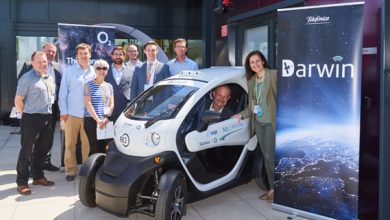Hesai launches ATX: Ultra-wide, long-range lidar

PALO ALTO, Calif., April 22, 2024 – Hesai Technology, a company of lidar technology, developing sensors to empower self-driving cars and robotics with accurate 3D perception, released its new ultra-wide field of view (FOV), long-range lidar—the ATX. The new product, which combines high-resolution imaging and advanced software algorithms, enables autonomous vehicles to detect and recognize objects and pedestrians over long distances, even in challenging lighting conditions.
With a longer detection range, higher resolution, and wider FOV, ATX empowers intelligent vehicles with excellent 3D perception. This new lidar utilizes Hesai’s advanced 4th-generation technology platform, with comprehensive upgrades to its laser transceiver module and size.
“We are very excited to debut the ATX and are confident it will have a great impact on the adoption of lidar given its versatility,” said David Li, CEO of Hesai Technology. “In creating this product, we wanted to give our customers an appealing solution to ensure safety is a standard feature in every intelligent vehicle.”
ATX incorporates the market-validated transceiver architecture from Hesai’s AT series. This significantly increases module integration and simplifies the core optical scanning structure, all while maintaining a compact and lightweight form. Moreover, Hesai has shipped over 300K units of AT128 as of today. The ATX is 60% smaller by volume and almost half the weight compared to the AT128. It features a minimum surface window measuring only 25 mm tall, and its power consumption is just 8 W.
ATX can be flexibly integrated into various positions on a vehicle thanks to its compact size and ultra-low power consumption. These positions include on the roof, behind the windshield, or inside the front headlights.
ATX has a maximum detection range of 300 meters. Its horizontal FOV reaches 140°, providing expansive visibility of complex road conditions such as surrounding vehicles or pedestrians. Its ultra-wide FOV also equips vehicle systems with comprehensive and precise perception information. It can identify conditions such as rain, fog, exhaust fumes, and water droplets, and mark them in real-time at a pixel level, filtering over 99% of environment noises.
ATX has already received design wins and nominations from global leading OEMs. Large-scale mass production of ATX is expected to begin in the first quarter of 2025. With the introduction of ATX-equipped models, more consumers will be able to experience a safer and more intelligent driving experience.




